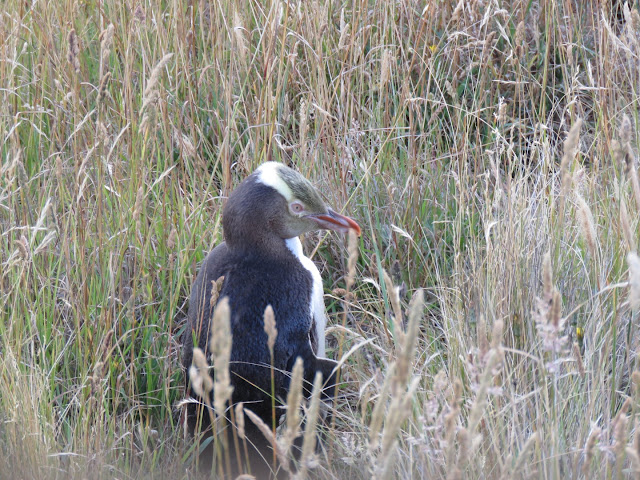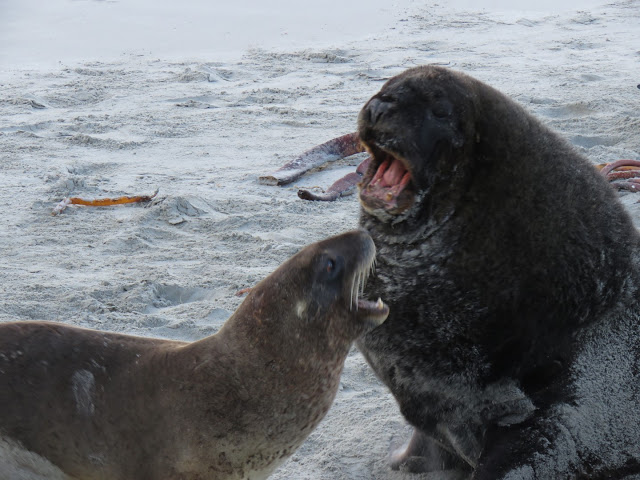There were custom-built viewing hides where we could view penguin chicks and their parents. The chicks' eyes turn yellow later.
The yellow-eyed penguin is the largest penguin living in a temperate region. They are very rare and very endangered. There are only 5000-6000 of them left and we felt privileged to view them.
The penguins nest on the grass hillsides. The parents are in the sea all day finding food for the young and starting around two hours before dusk you can see them coming in to the beaches to land.
They climb across the beach and up the hillside, through the grass, to make their way up to the nests to feed the chicks. Here the two parents are flanking a very fat, very well-fed, chick.
Hooker Sea lions are the rarest of the world's five species of sea lions and are endemic to New Zealand. They are making a comeback on the NZ mainland after being eliminated, by Maori hunting, centuries before the arrival of Europeans. There was no guarantee that we'd see any, but, there was a small group on the beach and we carefully made our way past them. They mostly took absolutely no notice of us. There is a risk that they could charge and their bite can be dangerous if you get in their way and block their escape route. The males can reach up to 3 metres in length, weigh up to 400 kg. and can live to 25 years. Females are smaller. On the beach tonight, there was a large male and a few juvenile males, no females in sight.
After viewing the sea lions, we went down to the next bay along the coast where we saw dozens of fur seal pups learning to swim in large tidal rock pools.
It was a wonderful evening and one of the best we've had on our entire trip so far.













Thank you for the tour!
ReplyDelete